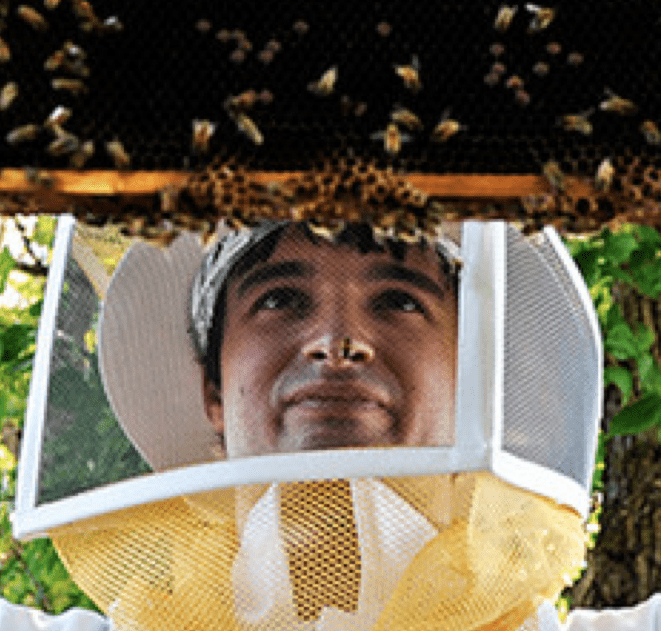Author: Garett Slater, Former Midwest Tech Transfer Team In part 1 of my blog series, I wrote about how genetics can shape reproductive males (drones) and both reproductive (queens) and non-reproductive (workers) females within a colony. However, genetics only explains part of the story. I will describe why that is in the second installment of my 3-part series: Part 1: The Genetic Book of Life-The basics to honey bee genetics (for Part 1 click here) Part 2: How Genetics and the Environment Shape Honey Bee Workers and Queens Part 3: The Differences Between Queens and Workers Queen determination has always fascinated researchers and beekeepers. This…
Author: Garett Slater
Honey Bee Caste Systems: Part 1- Honey Bee Genetics
I have always been fascinated with queens and workers. In fact, I spent my master’s degree studying the mechanisms that produce queens and workers. I want to spend the next three articles in this and upcoming issues discussing the complex processes that govern how an egg becomes either a worker or a queen. You can look forward to these three pieces: The Genetic Book of Life-The basics to honey bee genetics How genetics and the environment shape honey bee workers and queens The differences between queens and workers Honey bees have a system of sex determination (male drones versus female queens or workers) known as…
Advancing beekeeping through special projects and industry trials
The agriculture sector includes many industries, such as crop and livestock systems. Unlike beekeeping, these other industries have true extension services, which direct programs for change. These changes advance the industry, promote sustainable practices, and enhance production practices. However, beekeepers have rarely had true extension services and service to their issues, until now. The Bee Informed Partnership (BIP) is a non-profit organization that provides these types of extension services to beekeepers. One major service BIP provides is special projects and industry trials. These projects and trials performed for university, beekeepers and industry experts test ideas and concepts. Laboratory and field studies need replicates in real-time…
The signs of mite damage- How to identify progressed varroosis?
Varroa infested colonies entered the United States in ~1987, and changed beekeeping forever. Beekeeping has always been time consuming, difficult and experience oriented; however, beekeeping became even more challenging when beekeepers were called to eradicate a bug on another bug. Since its introduction in the US, beekeepers have reported high annual colony losses due to mites. In fact, some beekeepers report 60% losses due to this troublesome pest. While beekeepers have faced devastating challenges before, including American Foulbrood, Varroa mites has presented damages never before seen. Varroa have become more difficult to manage since their introduction. The mites are seemingly embedded within the honey bee…
Supplementing Bees with Acai Powder: My Upcoming Summer Trial
I have a few perks working with Bee Informed Partnership out of the University of Minnesota: 1)I get to build relationships with many commercial beekeepers, 2)I have access to the University of Minnesota lab equipment and 3) I get to utilize Marla Spivak's great mind along with other members of the lab. Because I have been fortunate enough to have this type of access, I can now test this idea I have had for many years: Can we feed bees antioxidants to improve health? Before I chat about the actual experimental design, I want to give you more background information. By the way, I am excited about…
Comb Management Part 2: Comb size
Artificial foundation was developed shortly after the invention of the removable frames. The first foundation frame was invented by Johannes Mehring in Germany (Graham, 1992). But as more people began producing artificial foundation for Langstroth hives, beekeepers began experimenting with different sized cells. Fast forward to today; we see both small cell and standard comb, but why is that? Well, that is the topic of part 2 of this 4-part blog series. History of comb management- https://beeinformed.org/2017/09/14/comb-management-part-1/ Cell size: why so much variation between producers? Management strategies of foundation Benefits of replacing old comb In part 1, I wrote about the history of comb…
Comb Management: Part 1
Comb management is an important aspect of beekeeping, but comb management has not always been a management strategy of beekeepers. Rather, comb management is a fairly new concept. Beekeepers started managing comb with the invention of the Langstroth hive in the 1850’s. Today, comb management is a common practice for beekeepers, and an aspect of beekeeping beekeepers must be cognizant of. Because of the importance of comb management, I am writing 4-part blog-series on the subject. The blog-series is split into 4 parts: History of comb management Management strategies of foundation Cell size: why so much variation between producers? Benefits of replacing old comb I…
Meet Garett Slater! New Midwest Tech Team Member
I am the newest member of the Midwest Tech-Transfer Team! I, along with my trusty comrade Phoebe Koenig, work primarily with Minnesota and North Dakota migratory beekeepers. We sample colonies for Nosema and Varroa, while performing whole colony inspections negative health symptoms, i.e. diseases, pathogens, pesticides. I am new to BIP, and in the process of meeting many ND/MN beekeepers, learning diagnostic techniques, and figuring out it is extremely easy to get lost finding bee yards (Damn you GPS!). I thoroughly enjoy this position because I get to work directly with commercial beekeepers. I am driven to provide beekeepers with data…
